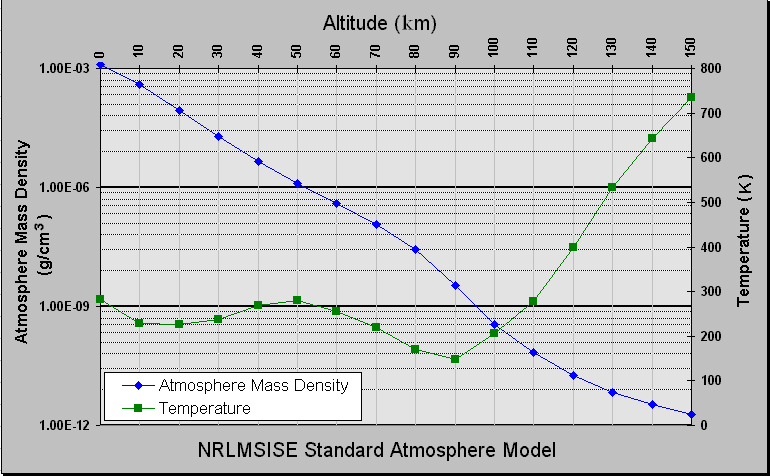Using a simplified model we can derive the formulas for lift and drag for a plate at high altitudes (above that of the mesosphere). The initial assumptions are that the particles present act independently, that in the reference frame of the plate the angle of incidence equals the angle of reflection for a particle bouncing off the plate and that its speed before and after are the same in this frame. The angle of the plate to the direction of motion is α. The direction of the particle after the collision in the frame of the plate is "e".

The initial and final conditions for the collision are as follows from which we can find the initial and final total momentum and kinetic energies.

Equating the momentum and kinetic energy before and after the collision we can determine the work done as the plate moves and the force acting on it.

One can see here that the values are reduced for particles deflected sideways from the those for a plate perpendicular to the direction of its motion. Completing the derivation we find the formulas for the lift and drag. C
L and C
D are the lift and drag coefficients.

The values for the coefficients are larger than normally encountered. At extremely high altitude the gases present have large separations between them so they have no viscosity and no cohesion. Intermolecular forces do not play a role.
For a more accurate calculation one might try scattering theory. For orbital speeds we can't assume that all collisions are perfectly elastic.
Edit (27 Sept): Changed the subscript of the resultant coefficient from N to R. The resultant is normal to the plate in its frame of reference. I was influenced by the some history in choosing the symbol for it (see Anderson's
A History of Aerodynamics pages 104 & 169).








